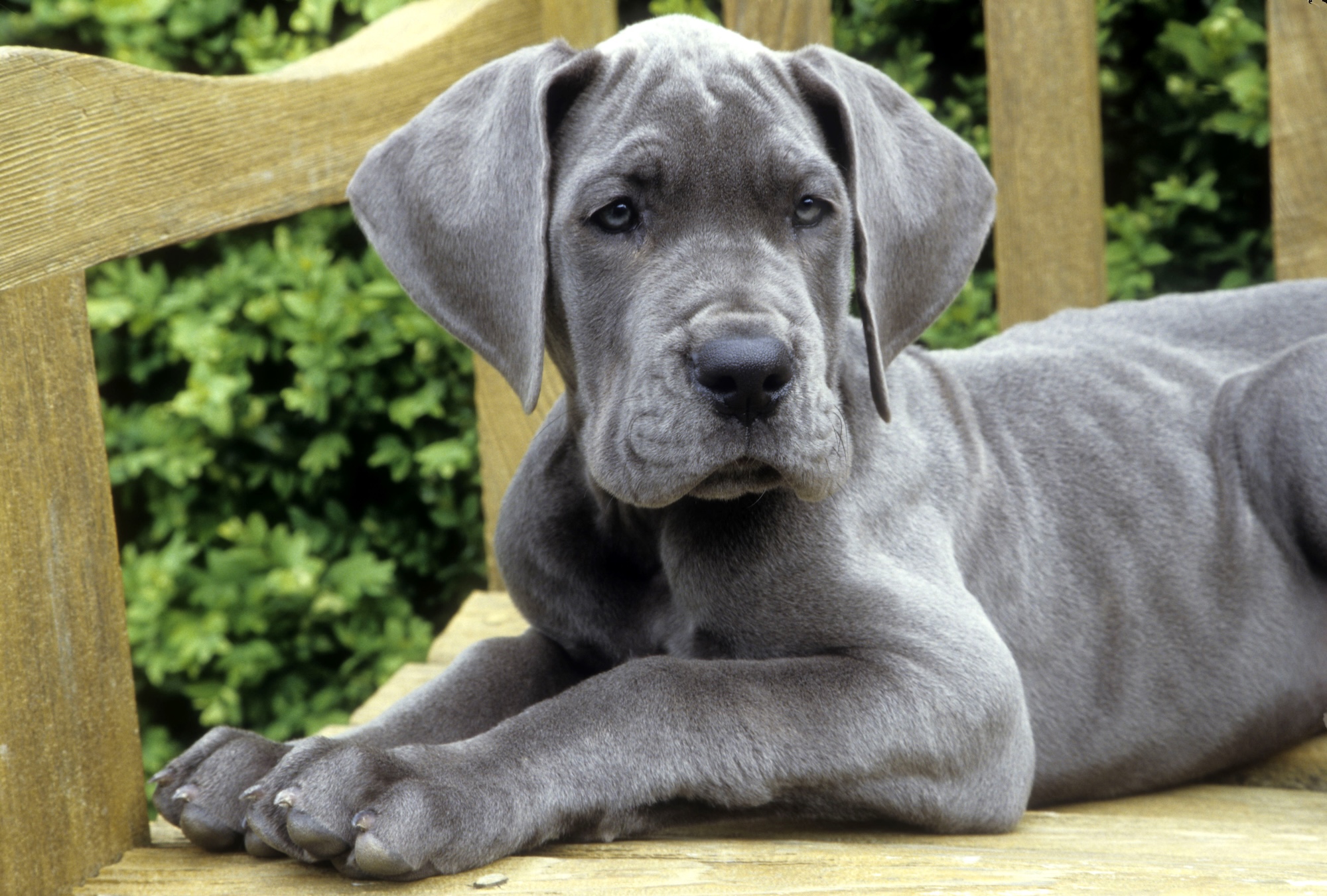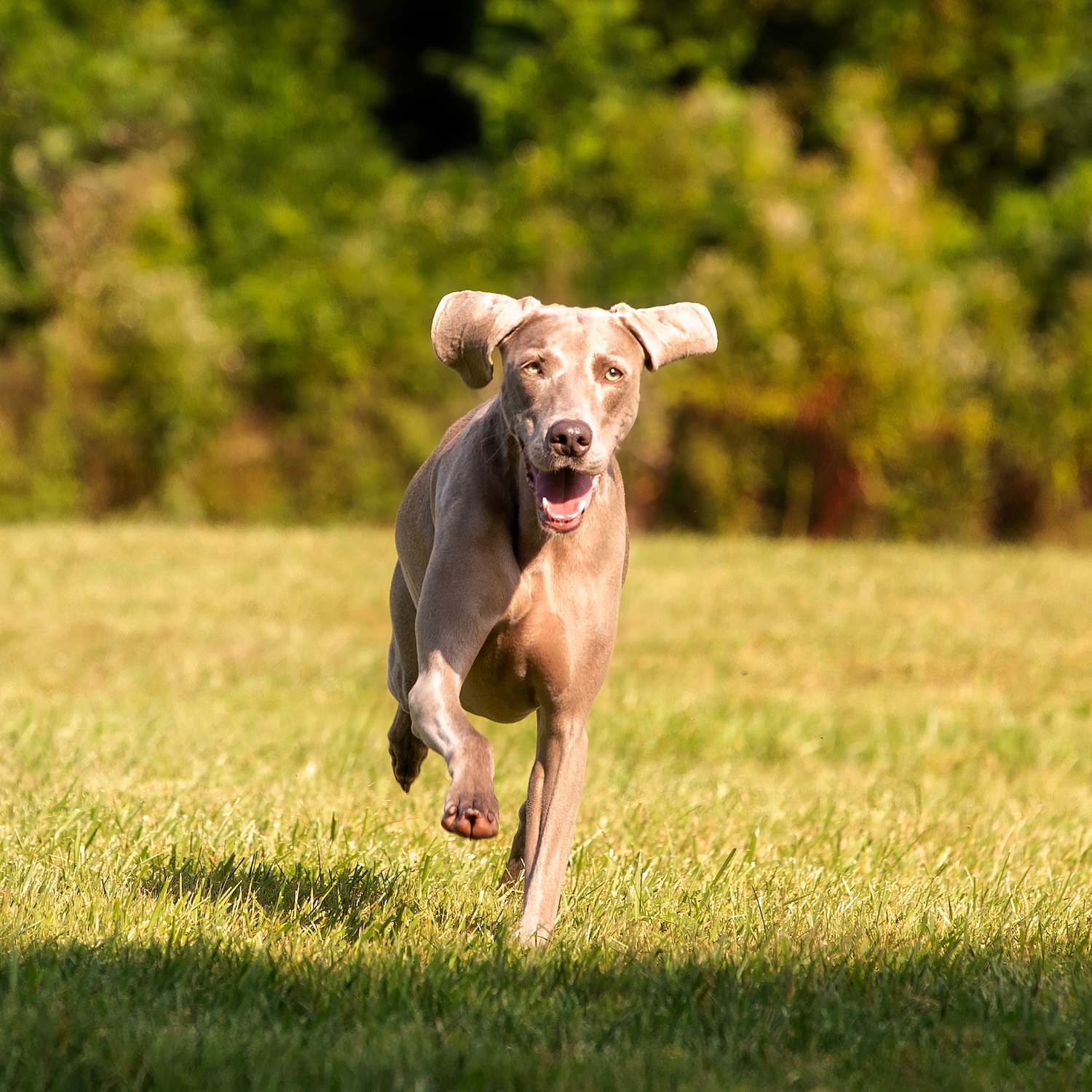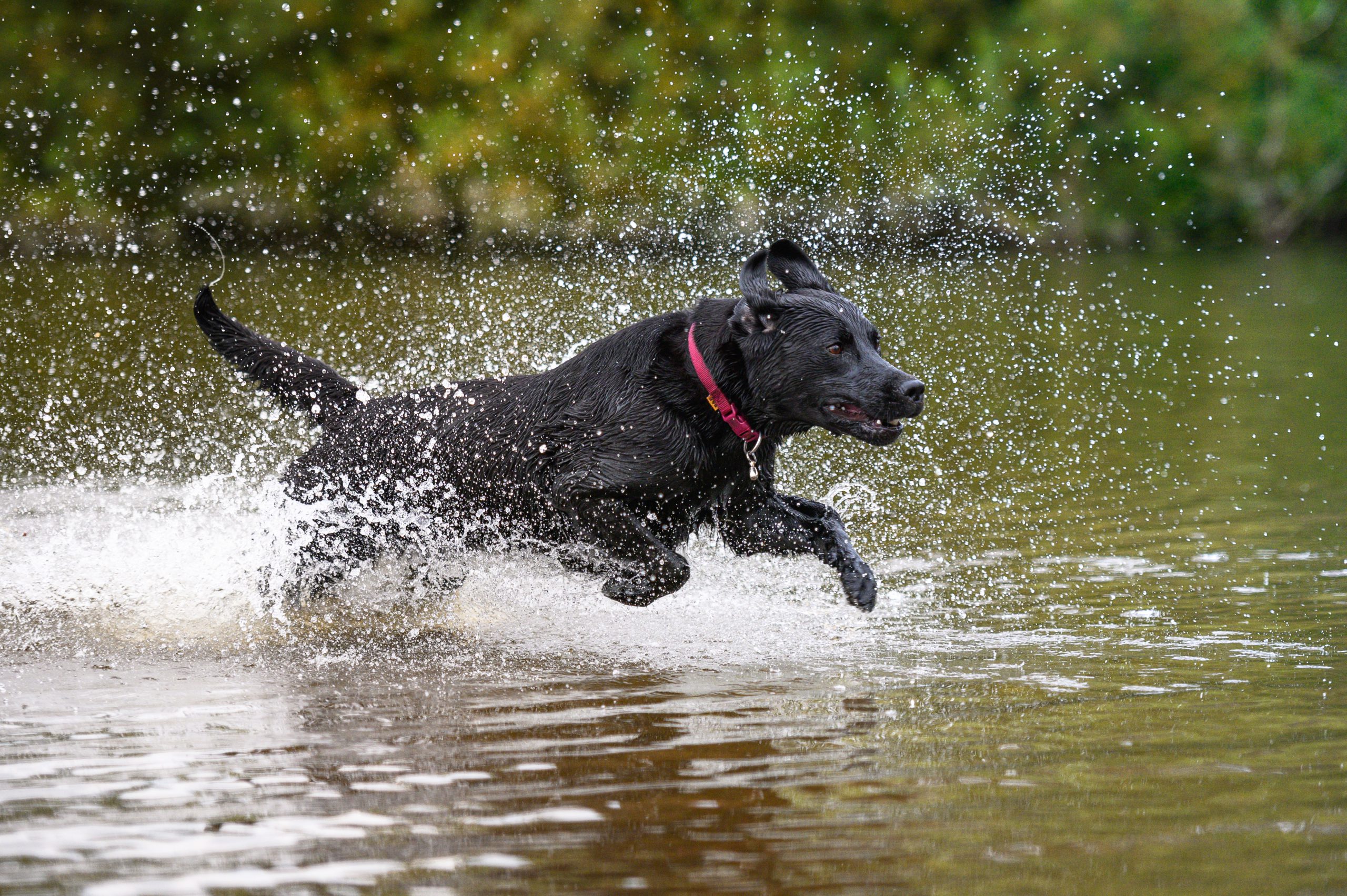Nothing quite matches the playful, family-oriented nature and the magnetic appearance of the Samoyed, an ancient breed originating in the farthest northern reaches of Siberia thousands of years ago. With a dazzling white double coat designed to keep them warm in -40-degree weather, an active prey drive, and a fierce independent streak, Samoyeds are special dogs who require dedicated owners up to the challenge.
If you’re interested in making a Samoyed a member of your family, read on.
Basic facts about the Samoyed
A member of the AKC’s working group, Samoyeds are medium-sized dogs, topping out at about 24 inches at the shoulder and weighing anywhere from 50 to 65 pounds. Thanks, however, to their gloriously thick coats, they have the appearance of a much larger dog. While most Samoyeds are pure white, there is some variation in coat color, with some Sammies appearing to be a soft cream and still others a beige-y biscuit, a color that also occasionally appears as spots on the more common white and cream coats.
The Sammy’s anatomy reveals the breed’s arctic heritage: their mouths are black and naturally upturned, which prevents drool (thereby preventing that drool from freezing to their faces); their ears are small, furry, and rounded to prevent frostbite; and their tails are arched over their back, a shape which allows them to curl it along their bodies and cover their sensitive noses while they sleep, keeping them warm.
They are every bit the hardy arctic work dog in looks and capabilities—but there’s more to this dog than meets the eye.
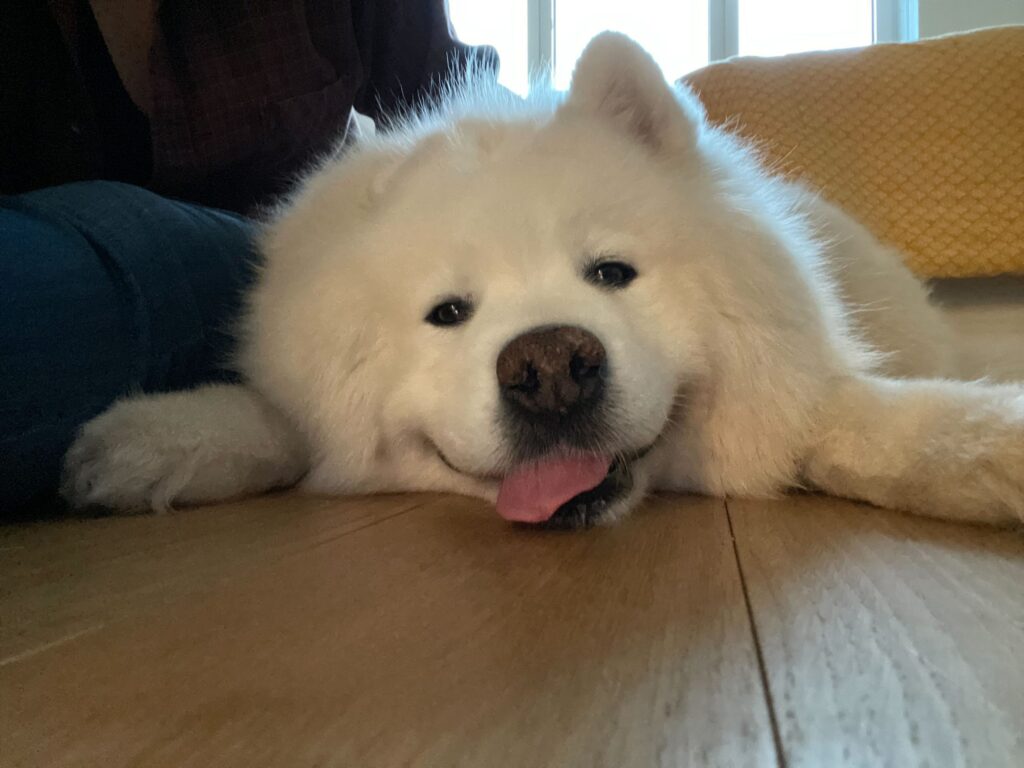
The smiling, silly Samoyed
While Samoyeds turn heads everywhere they go thanks to their fluffy white coats and signature grin, they’re not just beautiful; they’re also wonderful companions who live to be an integral part of the family unit. This is not a dog who should be left on their own for long stretches of time. They are family dogs through and through, interested in the goings on of their pack and especially taken with children. They’re gentle enough to be around small children (and in fact frequently “babysat” children as part of their multipurpose breeding), and they bring fun and levity to any family activity, always up for play or long walks. Their friendly demeanor extends to strangers, from whom they will gladly accept compliments and love.
Their smile is one of the first things people notice about Samoyeds. The upturned mouth is a signature of the breed, making them look like tricksters, holding sphinx-like secrets.
And they may very well have secrets they’re not sharing. Samoyeds have an independent nature. They were originally bred as reindeer herders, hunters, sled pullers, guard dogs, and companions, and as such, they frequently worked on their own, unilaterally making decisions, ensuring the herd stayed together and safe from intruders.
While today’s Sammies don’t have the overwhelming herding instincts of, say, border collies or Australian shepherds, their working legacy shines through in their intelligence and independence, which often presents itself as willfulness. Be prepared to devote time to early, firm, consistent training, or be ignored.
Once you do invest the time in training and socialization, you’ll have a smart, sweet, and playful companion for life. And you never have to worry about what your Sammy is thinking: they are very vocal, not only barking to express their joy (and sometimes displeasure) but often yodeling and even trilling, almost as if they’re talking to you.

The long, cold history of the Samoyed
Approximately 2,000 years ago on the Taimyr Peninsula in the northern reaches of Siberia, where the winters are perpetually dark and often as cold as -40 degrees, the Nenets (part of a group of people originally known as Samoyeds) first bred the Samoyed, a constant companion with a shock of white fur—not unlike an undersized polar bear. These all-round canine workmates helped their human companions survive above the Arctic Circle by herding and protecting reindeer, hunting for game, pulling sleds, and even watching after children. (It’s important to note that “Samoyed” is considered a slur by the Nenets, meaning “self-eater” or “cannibal,” a name which originates from Russian stereotypes about the Nenets ethnic group.)
The Sammy is one of the oldest breeds in the world, and they didn’t leave their peninsula until the late 19th century, when Arctic explorers used them as work dogs for their often dangerous (and even deadly) explorations. Eventually, the Samoyed made its way to Europe and eventually the U.S. in the early 20th century, where they’ve been beloved companions ever since. And despite their thick double coat, they can adjust to warmer temperatures, as long as owners take care to protect them from too much heat exposure.
Caring for a Samoyed
Because Samoyeds were bred to work, they require extensive training, exercise, and mental stimulation. If you don’t teach them how to direct their mental and physical energy (which they have in spades), they will rely on instinct, which can lead to annoying and even destructive tendencies.
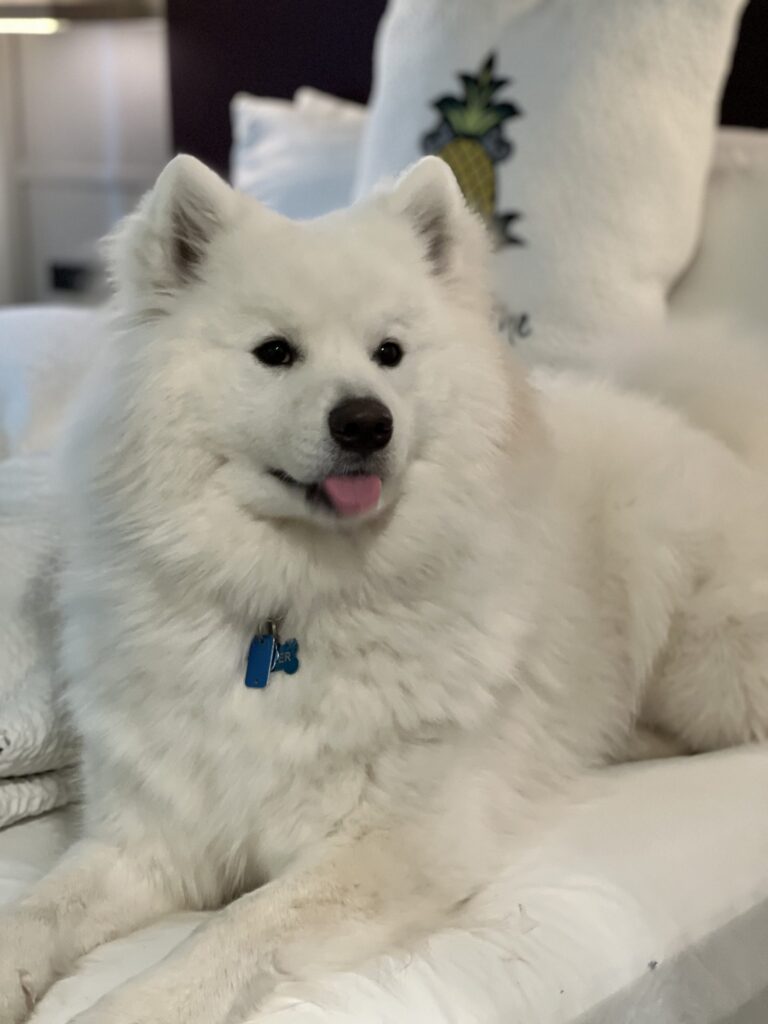
Exercise for a Samoyed
A Samoyed will be happiest with an active human companion. As working dogs, Samoyeds have energy and stamina to spare and require regular, vigorous physical exercise. While most dogs do well with 45-60 minutes of exercise per day, your Samoyed will need at least that, though upwards of two hours is preferable. Sammies do well on long walks and hikes, and depending on the weather, they even make great cool-weather running companions (they should never physically exert themselves for more than 15 minutes at a time when it’s over 70 degrees). Teach them to fetch or play frisbee. Samoyeds are great candidates for dog sports. Even if you’re not signing up for an official event, you can create a DIY agility course in your backyard.
“They are amazing with people and children, and they really become part of your family. They can be quite stubborn and willful, so training and boundaries are absolutely essential, but the breed has the most special place in our hearts and we can’t imagine life without Samoyeds.” — Ryker’s owner, Evelyn Avedisian
Samoyed training
It’s essential that you start training these intelligent dogs immediately, and that you remain firm and consistent, or else your Sammy’s willful nature can turn into unwanted behavior. Start with the basics, such as sit, stay, and lay down, and move onto more advanced (but extremely important) commands such as leave it. Practice every day for at least a few minutes to reinforce their listening skills—this is a dog that requires lifelong training practice.
Further, training and obedience skills are about more than just reining in their stubbornness and directing their brain power in a productive way: Sammies need to work out their brains just as much as their bodies, and teaching them new tricks is a great way to do this.
Along with teaching specific skills, training should also include establishing the day-to-day relationship you want with your dog. Set and boundaries in the house (for example, staying off furniture, or keeping away from food on the counter).
“Boscoe learns tricks and skills incredibly fast—he is incredibly focused and you can see his brain working as he learns. His favorite game is ‘Find the Babies,’ where we hide his stuffies all over the house and he retrieves them, one at a time, putting them away in his toy bin (for treats, of course).” — Boscoe’s owner Jennifer Christison
A job to do
It’s hard to overstate the importance of purpose in a Samoyed’s life. Sammies are working dogs and have been for thousands of years. They are alert and intelligent and need to use their intelligence in a way that feels purposeful to them. In fact, all dogs need mental stimulation—it tires them out as much or more than physical stimulation, and as we know, a tired dog is a happy dog. Provide your Samoyed with lots of brain-taxing puzzle toys, and use home-made nose games to keep them mentally stimulated. Samoyeds can make great therapy dogs. Given their natural inclinations, pulling exercises may also be a great energy-burner—but only if your pup has already been leashed trained and won’t turn every activity into a pulling game.
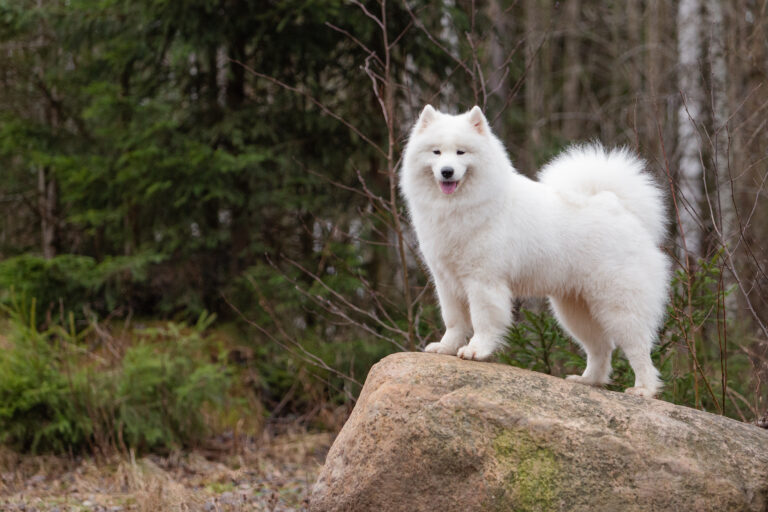
Include them in family activities
Independent as they are, Samoyeds need to be included. They were bred to live with families, not just watching over them and working for them, but sleeping with them, playing with them, loving and being loved. As such, these are not dogs who are content to be left to their own devices for hours at a time. If you’re going to make a Sammy a member of your family, do so knowing that they want to go where you go. Crate training your Samoyed puppy is a good idea—it’ll ease potty training and will help them get used to happily spending time on their own.
“His FOMO can be challenging, and contributes to him having difficulty settling down. We are teaching him how to ‘focus’ and ‘go settle’ when he gets too excited, and sometimes we need to make him take a nap! He just doesn’t want to miss out on anything fun.” — Jennifer Christison
Samoyed grooming
Sammies have an extremely thick double coat of fur which requires frequent grooming. This means weekly brushing (daily during their summer coat-blowing period). They also need regular nail trims, monthly baths, and regular grooming. Just be sure to avoid shaving their coat—as with all double-coated dogs, their fur is designed to keep them both warm and cool.
One cool thing about Sammy fur: because of its wool-like quality, it can be spun and used to make clothing. Just another way in which Sammies helped their families survive in the arctic for thousands of years. Yet another cool thing: Samoyeds are known to have “teflon” coats because dirt and mud don’t stick well (so even when that gorgeous white coat gets a mud bath, when dry, dirt tends to fall off).
Common health concerns for a Samoyed
While Samoyeds are a generally healthy breed and can live anywhere from 12 to 14 years, they’re not without their health challenges.
Allergies: Sammies are prone to skin allergies. Common symptoms include excessive scratching, licking paws, scaly or raw skin, and even diarrhea. Allergies can be caused by environmental factors (such as pollen or fleas) or food. Consult your vet about medicated shampoos, diets that help identify allergies, and next steps for treatment.
Bloat (aka gastric dilatation-volvulus): Like many barrel-chested dogs, Sammies are predisposed to bloat (read more here). It’s a life-threatening condition that requires immediate medical attention—a few minutes can mean the difference between life and death. Symptoms include a distended abdomen, retching, labored breathing, hunching, and general signs of discomfort. Contact a vet immediately if your Sammy is displaying any of these symptoms.
Cancer: Samoyeds are prone to several types of cancer, including pancreatic, mammary/breast, and liver cancers.
Diabetes: Sammies are more prone to developing diabetes than many other breeds, which means they have trouble regulating their ability to metabolize sugar. Symptoms include increased thirst and appetite, increased urination, and unexplained weight loss. If your Sammy has any of these symptoms, consult your vet immediately. The only treatment is regular insulin injections, though you may also be able to manage their diabetes with diet and regular dental care. Studies show that dental disease can cause insulin resistance, which can exacerbate diabetes-related health issues.
Eye problems: Samoyeds often suffer from dry eye, cataracts, and progressive retinal atrophy, among other eye problems. Signs of eye problems including scratching at the area, redness, and watering eyes. Have your vet examine their eyes if they show any of these signs.
Heat stroke: Samoyeds are at high risk for heat stroke thanks to their extremely thick double coat. It’s absolutely essential to avoid too much heat exposure, limiting walks or other outdoor activity in any weather over 70 degrees to, at most, 15-20 minutes. Ensure they have access to water and a cool place to rest at all times.
Hip/elbow dysplasia: The Samoyed can suffer from hip and elbow dysplasia, which can lead to degenerative joint disease (DJD). While hip and elbow dysplasia are genetic joint deformities that occur while a dog is still growing, they can be exacerbated by extra weight, so it’s important to keep your Sammy at an ideal weight. Symptoms include weakness and pain in the hind legs and difficulty getting up from a sitting or lying down position.
Hereditary glomerulopathy: Samoyeds are prone to renal disease called hereditary glomerulopathy, where protein is progressively lost from the kidneys. Sufferers can end up in renal disease and failure at a young age. Signs include excessive drinking and urination, decreased appetite, weight loss, vomiting, lethargy and weakness. Speak to your vet about keeping on top of your dog’s kidney health.
Uveodermatologic syndrome: This is an immune-mediated disease that can manifest in inflammation of the eye, and depigmentation of skin and fur. Speak to your vet about the condition, especially if you notice signs of sun intolerance, squinting, excessive blinking, or white spots on the nose.
Feeding your Samoyed
As noted, Samoyeds are prone to allergies, bloat, and joint problems—all challenges which can either be improved or exacerbated by what, when, and how much they eat.
Just a few pounds can severely impact your dog’s quality of life: research shows that obesity is not only endemic to American dogs, with 56% of dogs in the U.S. considered overweight or obese, but it increases the risk of developing cancer, to which Sammies are already prone, and shortens their lifespan. Feeding too much or feeding ultra-processed foods can lead to weight gain, which can contribute to the arthritic pain caused by hip dysplasia, a common ailment among Sammies. Maintaining a healthy body condition can prevent or alleviate joint problems such as hip and elbow dysplasia, improving your Sammy’s quality of life (watch how to check your dog’s body condition here).
A fresh food plan makes it easy to give your Samoyed pre-portioned, healthy meals tailored to their age, size, activity level, and weight. And, since allergies are common in Sammies, it’s a good idea to know exactly what’s in their food—something that’s hard to do with kibble, which often contains ingredients not listed on the label.
A healthy diet is the best way to support your Sammy’s health and happiness—along with plenty of love, adventure, and play.
